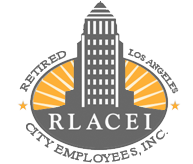
LACERS BOARD UPDATE
By Michael R. Wilkinson, LACERS Commissioner
First, I want to wish all of you and your families a wonderful New Year as we work collectively to put the COVID-19 health crisis behind us.
This is a great time to mark a recent high-water mark for the value of the total fund, which hit $20.27 billion on Nov. 23. As we have discussed, the total value of the fund will move up and down in the financial markets, so we should not be overwhelmed with the euphoria of the market highs or have bad feelings when the financial markets go the other way. The important thing to note is that LACERS has an all-weather plan that will provide your full pension regardless of the current financial conditions.
Our actuary, Segal Consulting, recently reported LACERS’ actuarial valuation and funded ratio. One of the most important reasons for LACERS to use the valuation is to set the rate that the City will pay LACERS to support the pension plan starting in July 2022. The funded ratio is the percentage of the actuarial assets of the plan as a percentage of the promised benefits of the plan (the actuarial liabilities).
The actuary found that funded status for the retirement system moved from 71.3 percent to 69.4 percent funded, while the Health Subsidy Benefits moved up from 84.4 percent to 85.6 percent funded. The health plan continues to benefit from decades of “prefunding” the plan while most pension plans were practicing “pay as you go” and not putting extra money away. The combined funded status moved from 73.1 percent to 71.6 percent funded. This will result in an increase to the total contribution rate that the City pays from 29.12 percent to 32.25 percent of the City payroll.
Why did the funded ratio change? For the retirement plan, the investment returns were less than expected and salary increases were higher than expected. In addition, there were changes in actuarial assumptions such as the reduction of the assumed investment return from 7.25 percent to 7.00 percent. These increases in actuarial costs were somewhat offset by reductions due to the enrollment of new employees in the lower cost Tier 3, health premiums that were lower than projected and other miscellaneous actuarial gains.
I know this is a lot of information. What does it mean to us as Retirees? The big picture is that the City will continue to pay 100 percent of the required contribution determined by the actuary to keep the plan financially healthy. The failure of employers to pay the full actuarial cost each year is what has put several public retirement plans around the country in serious financial trouble as they regularly underfund their state and local
pensions.












